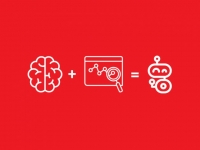Blog

What exactly is organic reach on Facebook? Organic reach is the number of potential customers who see your content without paid distribution; on the other hand, paid reach includes people who view your content due to paid promotion. You can make Facebook an efficient channel for your organic content and reach a wider audience with these 5 essential tips.

The most exciting, exhilarating experience you can ever have, starts with #AdobeSummit - here's why
Mar 25, 2019 Written by Mellissah Smith
The market for email service platforms can only be defined as overwhelming. It seems as though a new email platform surfaces every day. Some are geared towards mom and pop stores while others are aimed at a robust enterprise level. So how do you find the right platform for your business?

Yes, I am a Millennial...which means I’m likely lazy, entitled, and on my phone while writing this. Those are just a few of the generalizations made across my generation, most of which you and I know to be true. What you don’t know is that we are a more self-aware generation than has ever existed previously, and this is going to change your brand one way or the other.
It’s no shock to anyone that we live in the age of easy. The age of short attention spans. The age of Simple. This is primarily due to a shift in the current leadership demographic. Regardless of the industry,

We hear the word ‘branding’ thrown around a lot these days, but what does it really mean for your business? In short, it stands for the unspoken. In the long form, the branding of your business is the first and last thing your customers will see before they make the decision to do business with you.

Every week I meet with owners, executives, and managing directors of small businesses from across the US. In these meetings lay the ultimate battle of value. Will I get enough ROI? Do they have enough on-hand talent to handle what they promise? Are they credible and transparent? Do we get along?

We’re halfway into the first month of the new year. And of course, the internet is flooded with lists of trends and predictions for everything, including marketing. The rise of artificial intelligence, micro-influencers, and smart speaker voice commerce seem to be the common forecast amongst industry professionals.

Imagine receiving a gift from a friend or significant other that didn’t match your personality, style or tastes-- it just wasn’t “you.” It forces you to question how well that person really knows you.

In an ideal world, the journey from prospect to a loyal consumer would be a straight shot: see your product, purchase your product, use your product, repeat.

In the ever-changing world of marketing, it seems there are always new tools, tips, tricks and trends to discover and incorporate into your strategy. There are indeed dozens upon dozens of tools to consider utilizing, and it can become overwhelming to choose, but the list below provides ideas that you can try. And the best part? They’re free to use!

Your company’s brand is the most powerful tool in your toolbelt. As businesses grow and adapt to a constantly-evolving world with new tastes, new innovations, and new customer demands, it’s essential for your brand to reflect the current marketplace, but how do you know if you should rebrand or just refresh?

Have you ever been on a jog or in a cycling class, and suddenly you have a really brilliant, creative idea? In addition to being physically fit, the effects of exercise on your mind are multi-faceted, and creativity is just one of the benefits.



